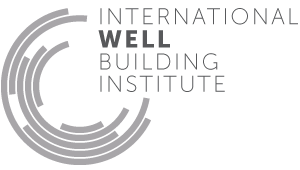Health and wellness awareness
- 84 Health and wellness awareness
- 85 Integrative design
- 86 Post-occupancy surveys
- 87 Beauty and design I
- 88 Biophilia I - qualitative
- 89 Adaptable spaces
- 90 Healthy sleep policy
- 91 Business travel
- 92 Building health policy
- 93 Workplace family support
- 94 Self-monitoring
- 95 Stress and addiction treatment
- 96 Altruism
- 97 Material transparency
- 98 Organizational transparency
- 99 Beauty and design II
- 100 Biophilia II - quantitative
- 101 Innovation feature I
- 102 Innovation feature II
- P5 Health through housing equity
- P6 Education space provisions
84. Health and wellness awareness
Health literacy, defined by the Institute of Medicine as “the degree to which individuals can obtain, process, and understand the basic health information and services they need to make appropriate health decisions” is essential for optimal health and well-being. Literacy requires awareness and an ability to decipher health literature and options for health services. Both accessibility and customizability of health-oriented literature are necessary to promote increased health awareness and well-being.
This feature promotes the availability of health and wellness literature, including detailed descriptions of WELL features and their benefits. A library of information provides an additional educational resource that encourages deeper understanding of health and wellness behaviors.
Explanatory guides allow occupants to familiarize themselves with and benefit from features that are incorporated into the project, as well as gain a broader understanding of health and wellness factors beyond the built environment. The following is provided:
A digital and/or physical library of resources is provided that focuses on mental and physical health and meets the following criteria:
A written document provides a narrative on a health and wellness curriculum that incorporates all of the following:

Applicability Matrix
| Core & Shell | New & Existing Buildings | New & Existing Interiors | |
|---|---|---|---|
| Part 1: WELL Building Standard® Guide | P | P | P |
| Part 2: Health and Wellness Library | P | P | P |
| Part 3: Health and Wellness Narrative | - | - | - |
| Commercial Kitchen | Education | Multifamily Residential | Restaurant | Retail | |
|---|---|---|---|---|---|
| Part 1: WELL Building Standard® Guide | - | P | P | P | P |
| Part 2: Health and Wellness Library | - | P | P | P | P |
| Part 3: Health and Wellness Narrative | - | P | - | - | - |
Verification Methods Matrix
| Letters of Assurance | Annotated Documents | On-Site Checks | |
|---|---|---|---|
| Part 1: WELL Building Standard® Guide | Visual Inspection | ||
| Part 2: Health and Wellness Library | Visual Inspection | ||
| Part 3: Health and Wellness Narrative | Architect | Policy Document |
| 84.3.c |
The U.S. EPA notes that the IAQ Tools for Schools Framework can provide guidance on the purpose of the IAQ Framework, which can translate into environmental health achievements in schools. |
